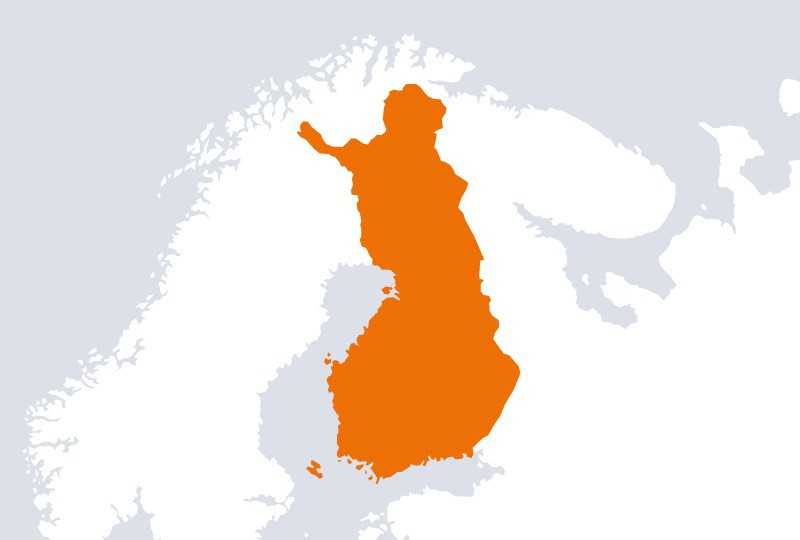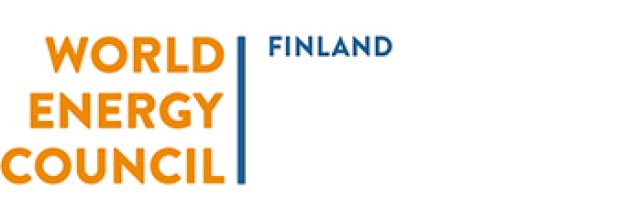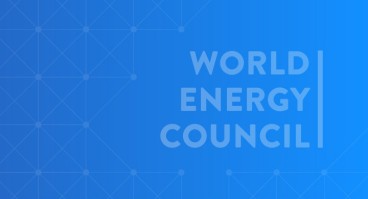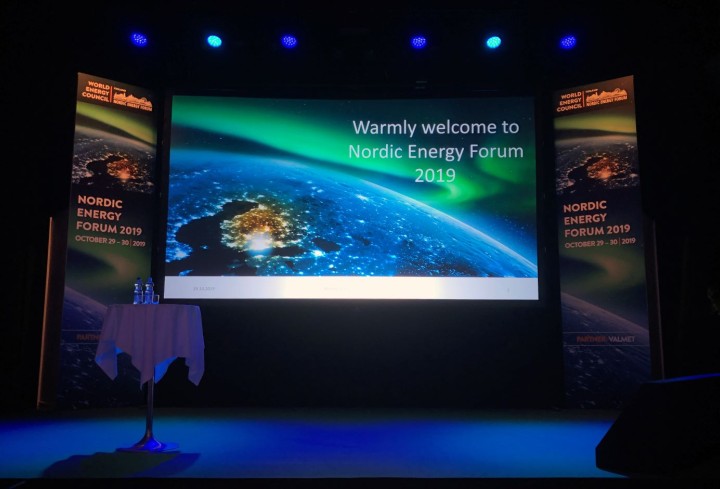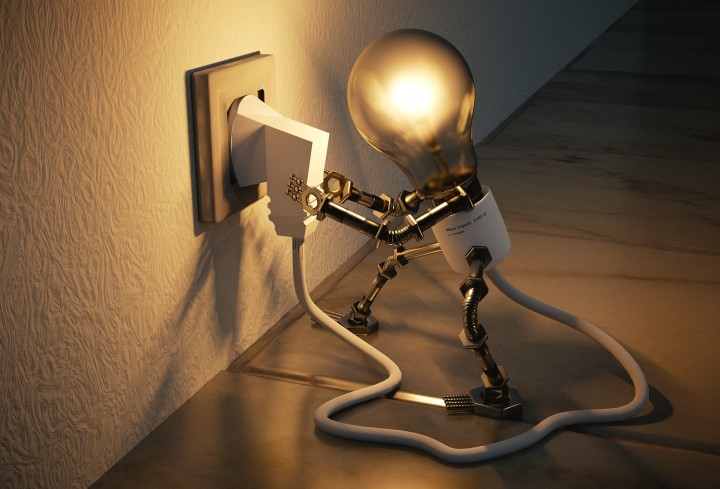The World Energy Council's Finland Member Committee was founded in 1993 as a co-operation body for various companies and organisations in the energy sector. World Energy Council Finland is a leading platform for energy producers, users and technology providers facilitating the energy policy dialogue and finding new strategic insights.
In order to achieve this aim World Energy Council Finland organises various high-level events and activities. Co-operation activities include regular seminars as well as organising one of the biggest annual energy industry events. It also provides prices indexes for heavy fuel oil and coal. In addition, World Energy Council Finland annually awards the best master’s thesis in fields of energy technology and energy economics in co-operation with Finnish Energy Economists.
Mr. Asla Koskinen is a business development director at Siemens Energy supporting Nordic and the Baltic’s energy and energy intensive industries on their decarbonization journey. He has extensive experience in different energy production processes and the technologies applied in them, as well as the challenges and drivers of the customers' operational environments.
Koskinen has more than 25 years of experience in various sales positions for systems & services sales and project execution for Siemens, Alstom, ABB Alstom and ABB. During his working career, he has also worked actively in various Finnish energy industry forums. In the ongoing transition of the energy market, his performance orientation, active interaction and courage to develop new things will help WEC Finland move forward.
45.jpg)
Energy in Finland
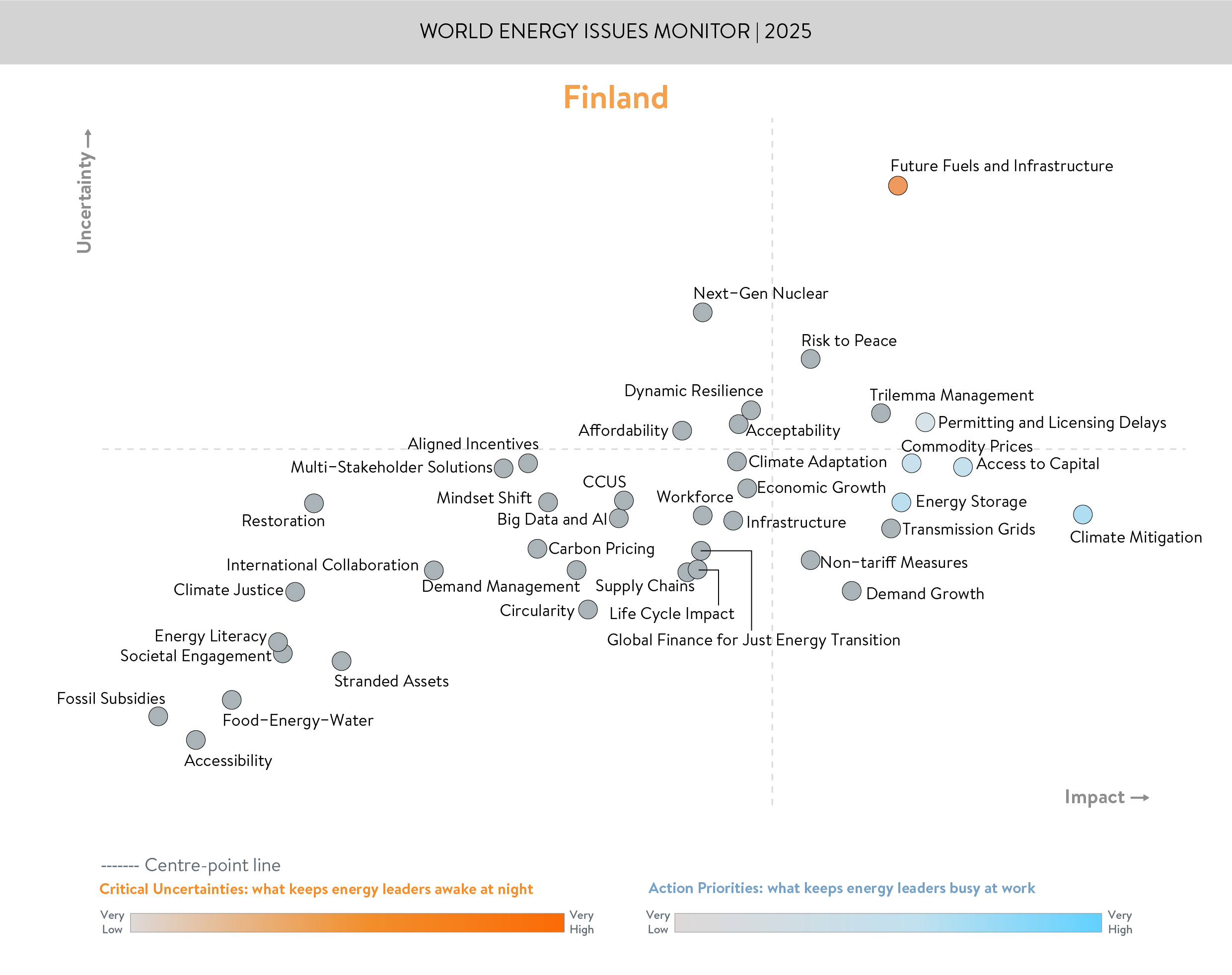
ENERGY ISSUES IN MOTION
Finland’s energy landscape faces critical uncertainty around Future Fuels and Infrastructure, driven by challenges in scaling up new technologies like hydrogen, ammonia, biofuels, and synthetic fuels. The successful implementation of these solutions hinges on addressing infrastructure gaps, securing investments, and aligning policies. These factors will play a key role in shaping Finland’s energy future. Meanwhile, the top priorities for action in 2025 are:
- Climate Mitigation – Advancing emissions reductions and meeting sustainability targets.
- Access to Capital – Securing large-scale demand-side investments to support energy projects.
- Energy Storage – Enhancing flexibility and resilience in the energy system with a growing share of intermittent electricity production capacity. Energy storage is not just an enabler but a key technology gamechanger that will influence the success of the energy transition.
- Commodity Prices – Managing market volatility and mitigating economic impacts.
- Permitting and Licensing Delays – Streamlining permitting processes to accelerate energy developments including fast-track lanes for critical green investments.
Changes in Finland’s Energy Landscape
Since the last iteration of the World Energy Issues Monitor in 2024, Finland has made significant strides in electrification of the heat and transport systems and increasing its renewable energy capacity, including wind, bioenergy, and hydropower. This transition has led to a downward trend in the use of fossil fuels and peat, and a growing need for energy storage solutions and grid enhancements to accommodate renewable variability. In April 2025, local utility Helen shut down its Salmisaari coal-fired power plant, effectively marking the end of coal use in Finland’s energy production and representing a major milestone in the country’s transition toward carbon neutrality. The integration of new fuels like hydrogen has also become a focal point in the country’s energy strategy.
As Finland accelerates its energy transition, Future Fuels and Infrastructure emerge as key technological gamechangers. The large-scale deployment of solutions such as hydrogen, synthetic fuels, and advanced biofuels faces challenges related to infrastructure readiness, investment security, and policy alignment. Addressing these uncertainties is paramount for ensuring a seamless transition to a low-carbon economy.
Climate mitigation remains Finland’s top priority. As the society is on the path towards electrification, renewable energy capacity is growing and energy-intensive industries transition to low-carbon solutions, Finland must ensure that decarbonization efforts lead to strong investments and sound policies. The country’s proactive stance is essential to meet its sustainability targets while safeguarding energy security.
FROM BLIND SPOTS TO BRIGHT SPOTS
Blind Spots
One of Finland’s key blind spots is the challenge of attracting sufficient investment in new fuels, such as hydrogen, and technologies such as SMR and CCUS, into the country’s existing infrastructure. This integration is hindered by the need for significant infrastructure development and the difficult situation of public finances. Additionally, flexibility of the electricity system and demand-side management are becoming increasingly important as Finland electrifies more industries and transportation sectors. Addressing these blind spots is critical for advancing Finland’s energy transition.
Bright Spots
Finland’s progress so far in hydrogen production, energy storage, and investments in renewable energy are significant bright spots. The country’s first hydrogen production plant, alongside investments in wind, solar, and energy storage, showcase Finland’s leadership in clean energy innovation. These initiatives position Finland as one of the leaders in the global energy transition.
ADDRESSING CRITICAL UNCERTAINTIES TO BALANCE THE ENERGY TRILEMMA
Finland continues to navigate the World Energy Trilemma, balancing Energy Security, Energy Equity, and Environmental Sustainability while managing key uncertainties that shape its energy future. Among the most pressing challenges are Future Fuels and Infrastructure, Climate Mitigation, and Energy Storage, all of which have significant implications for the three dimensions of the Trilemma:
- Climate Mitigation and Sustainability: Achieving Finland’s ambitious emissions reduction targets is a core driver of its energy policy. As the country transitions towards a low-carbon economy, increasing reliance on renewable energy sources, clean electricity, and advanced biofuels presents both opportunities and challenges. While these solutions contribute to sustainability, their large-scale adoption requires substantial industrial and infrastructure investments, regulatory alignment, and financial incentives. Ensuring the affordability and accessibility of clean energy remains a critical concern.
- Energy Storage as a Key Enabler: As renewable energy capacity grows, energy storage solutions play a vital role in securing grid stability and enhancing resilience. Storage technologies, such as battery systems, thermal storage, pumped storage and hydrogen-based solutions, allow for better management of intermittent energy sources like wind and solar. This directly strengthens energy security by ensuring a stable supply, even during periods of low renewable generation. However, cost and scalability remain major hurdles, requiring targeted investments and policy support.
- Investment Challenges: While Finland has taken proactive steps in expanding its renewable energy portfolio, the energy transition depends heavily on industrial investments and access to capital, but also on efficient permitting processes. The lack of industrial investments and delays in permitting can slow down critical energy projects, delaying the integration of new energy solutions.
Addressing these uncertainties is key to maintaining a balanced and resilient energy system. By prioritizing investment in storage solutions, further streamlining regulatory processes, and advancing clean energy technologies, Finland can strengthen its leadership in sustainable energy while ensuring long-term energy security and economic stability.
Key Takeaways from Finland’s 2025 World Energy Issues Monitor
- Future Fuels and Infrastructure remain a major uncertainty, reflecting the complexity of integrating new energy technologies.
- Climate Mitigation is the leading action priority, requiring strong commitments to policy, technology, and investment.
- Financial and regulatory challenges (Access to Capital, Commodity Prices, and Permitting & Licensing Delays), along with transformative technological gamechangers are central concerns for energy leaders.
Acknowledgements
Finland Member Committee
Downloads
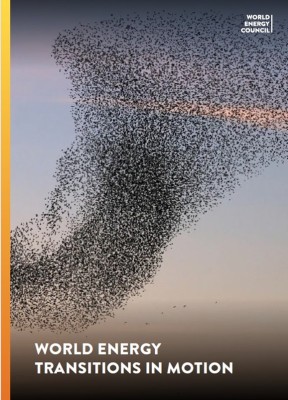
Finland World Energy Issues Monitor 2025 Country Commentary
Download PDF
World Energy Issues Monitor 2025
Download PDF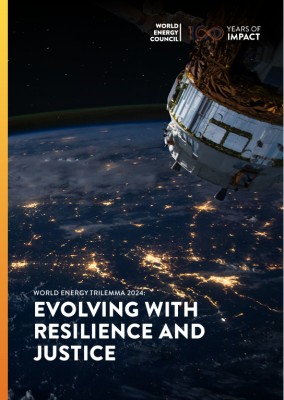
Finland World Energy Trilemma Country Profile 2024
Download PDF

